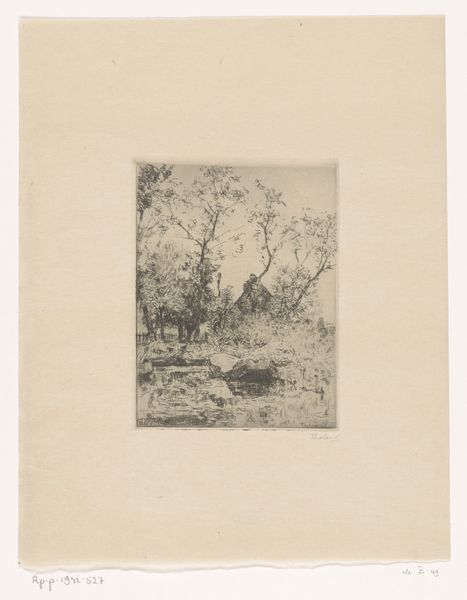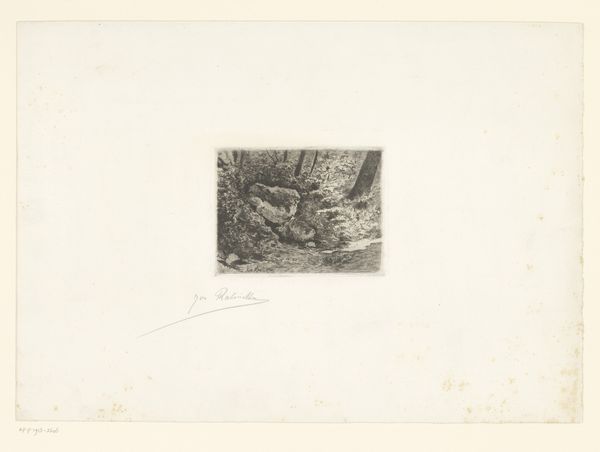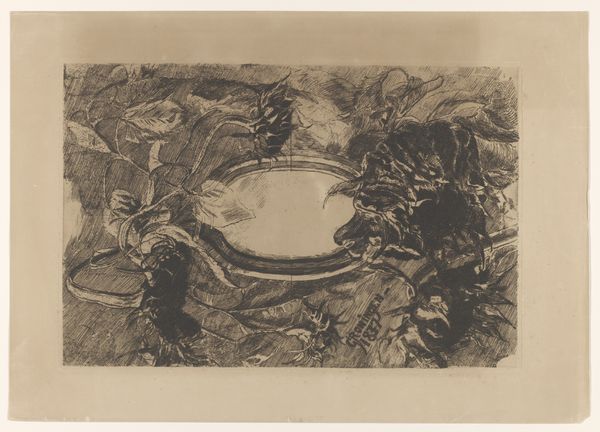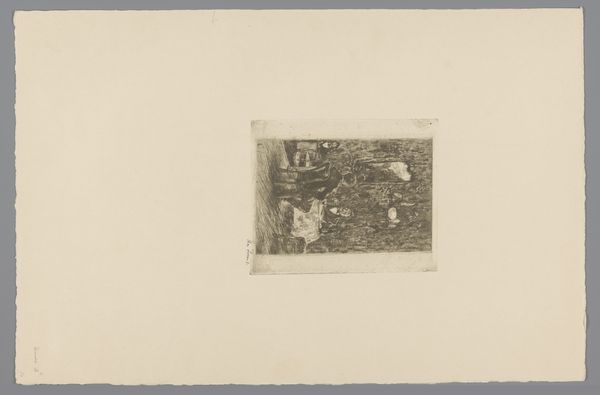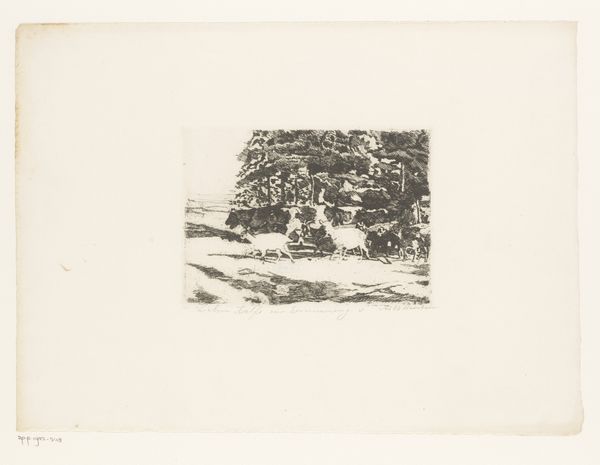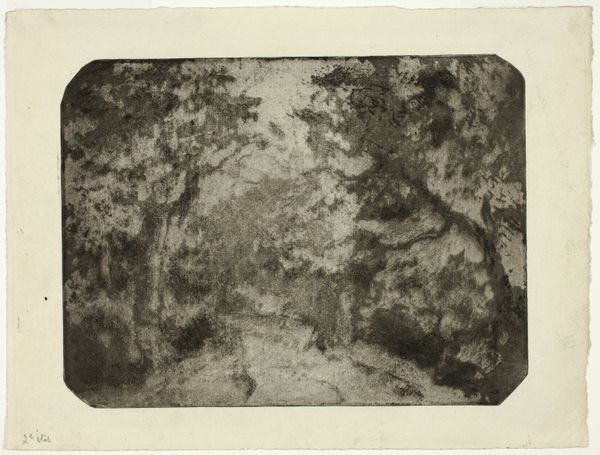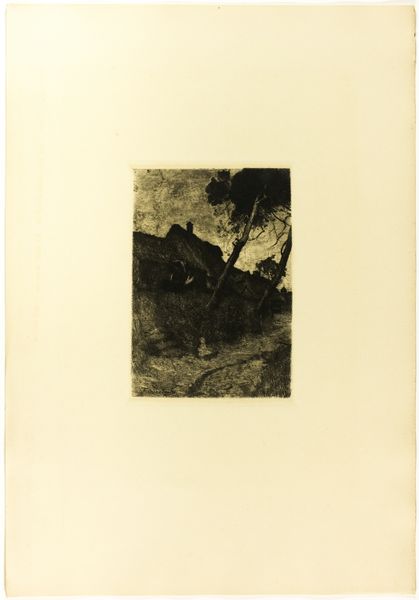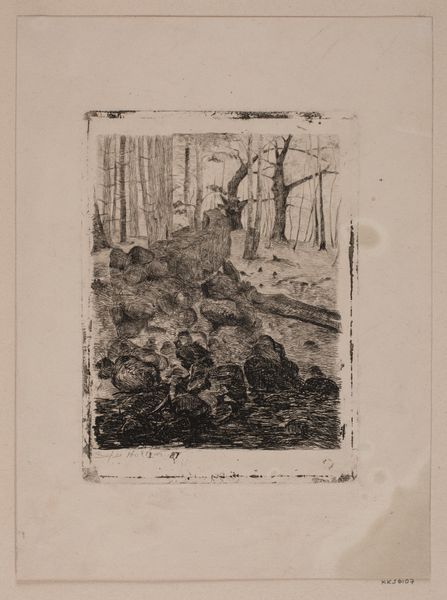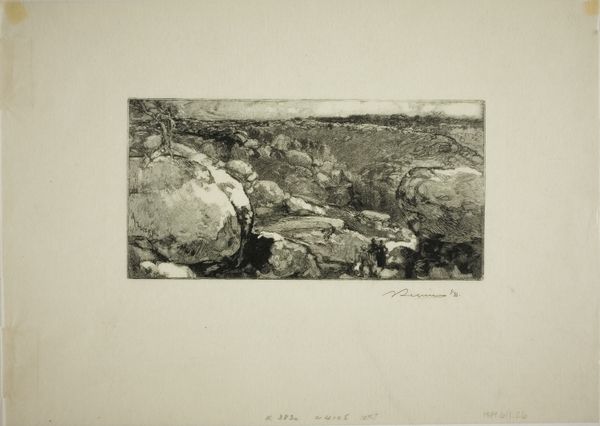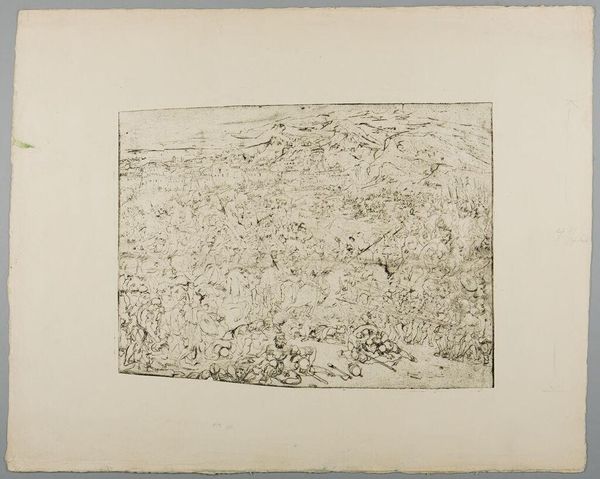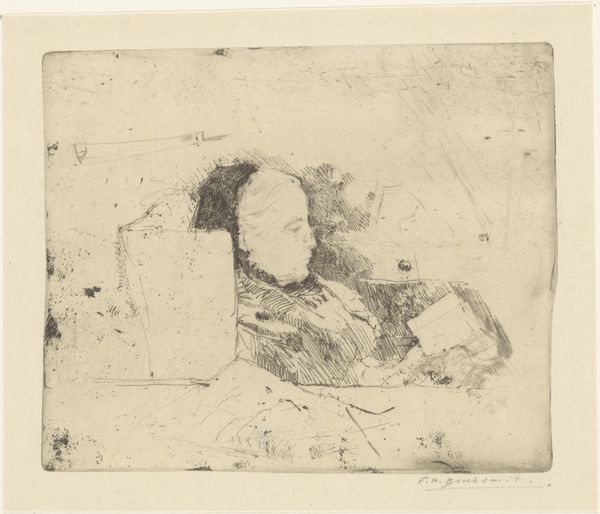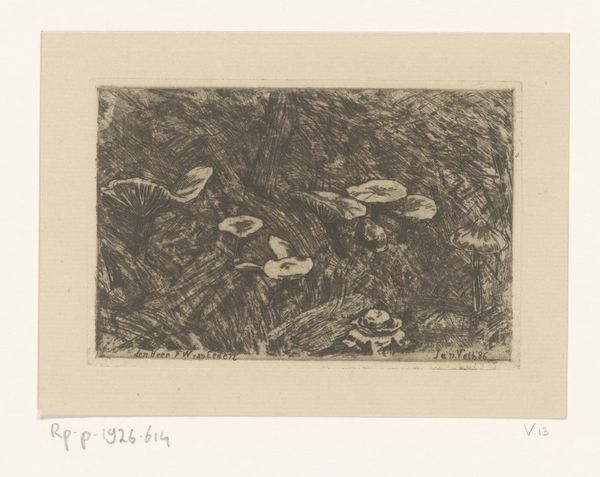
print, etching, paper
# print
#
etching
#
paper
#
abstract
#
pencil drawing
#
ink drawing experimentation
#
geometric
#
monochrome
Dimensions: height 248 mm, width 476 mm, height 450 mm, width 630 mm
Copyright: Rijks Museum: Open Domain
Editor: This is Nono Reinhold's "Minéral" from 1960, an etching on paper. It’s monochrome and quite abstract, with lots of geometric shapes. I get the sense of something being broken down, or perhaps being examined under a microscope. What do you see in this piece? Curator: That's a very insightful observation. When I look at "Minéral", I’m immediately drawn to the context of its creation, the post-war era. Think about the rebuilding process, the fragmentation of societies and identities. Does the artist seem to be using the visual language of abstraction to explore those themes of disruption and reconstruction? Editor: That’s interesting, I hadn’t considered the historical context. It's like the artist is dissecting something, reducing it to its essential elements. Curator: Exactly! And think about the title "Minéral". Minerals are the building blocks of our planet. Could Reinhold be drawing a parallel between the geological world and the societal shifts occurring at the time? Etching itself involves a kind of controlled destruction of the plate surface, doesn't it? Editor: So the process of creating the print mirrors the theme of fragmentation? Curator: Precisely. Also, who has the power to "examine" and "dissect?" The very act of artistic interpretation can also have embedded power dynamics. What do you make of that? Editor: I never considered that. It's like Reinhold is prompting us to think about not only what we see but how and why we are seeing it. Curator: Precisely. It challenges our own roles as viewers and interpreters of the work. Editor: It makes you wonder if he chose abstraction to resist fixed interpretations or even propaganda, maybe providing commentary against social upheaval while living in the aftermath of the World Wars. I definitely see more in it now! Curator: And hopefully, that will spark more conversation.
Comments
No comments
Be the first to comment and join the conversation on the ultimate creative platform.
